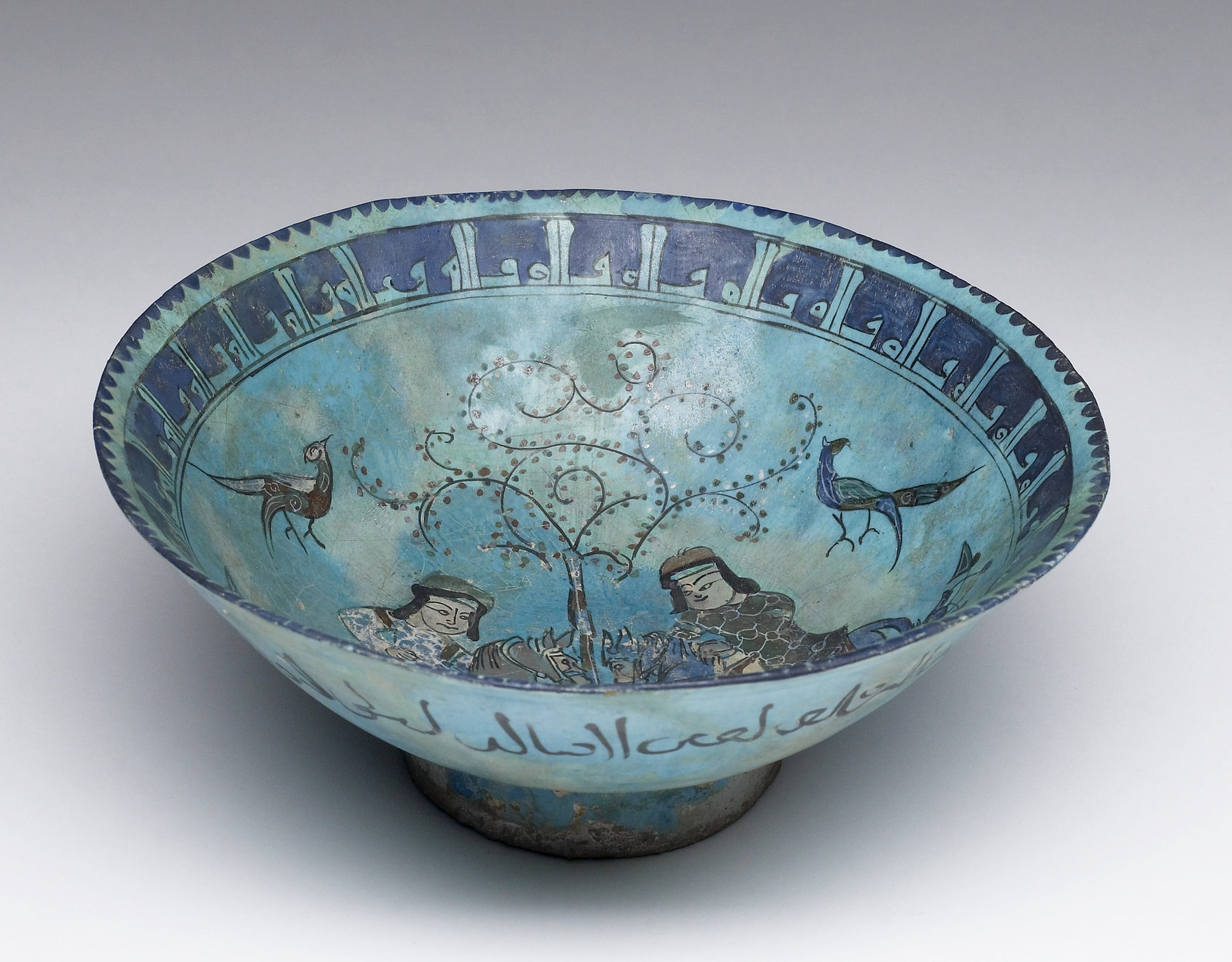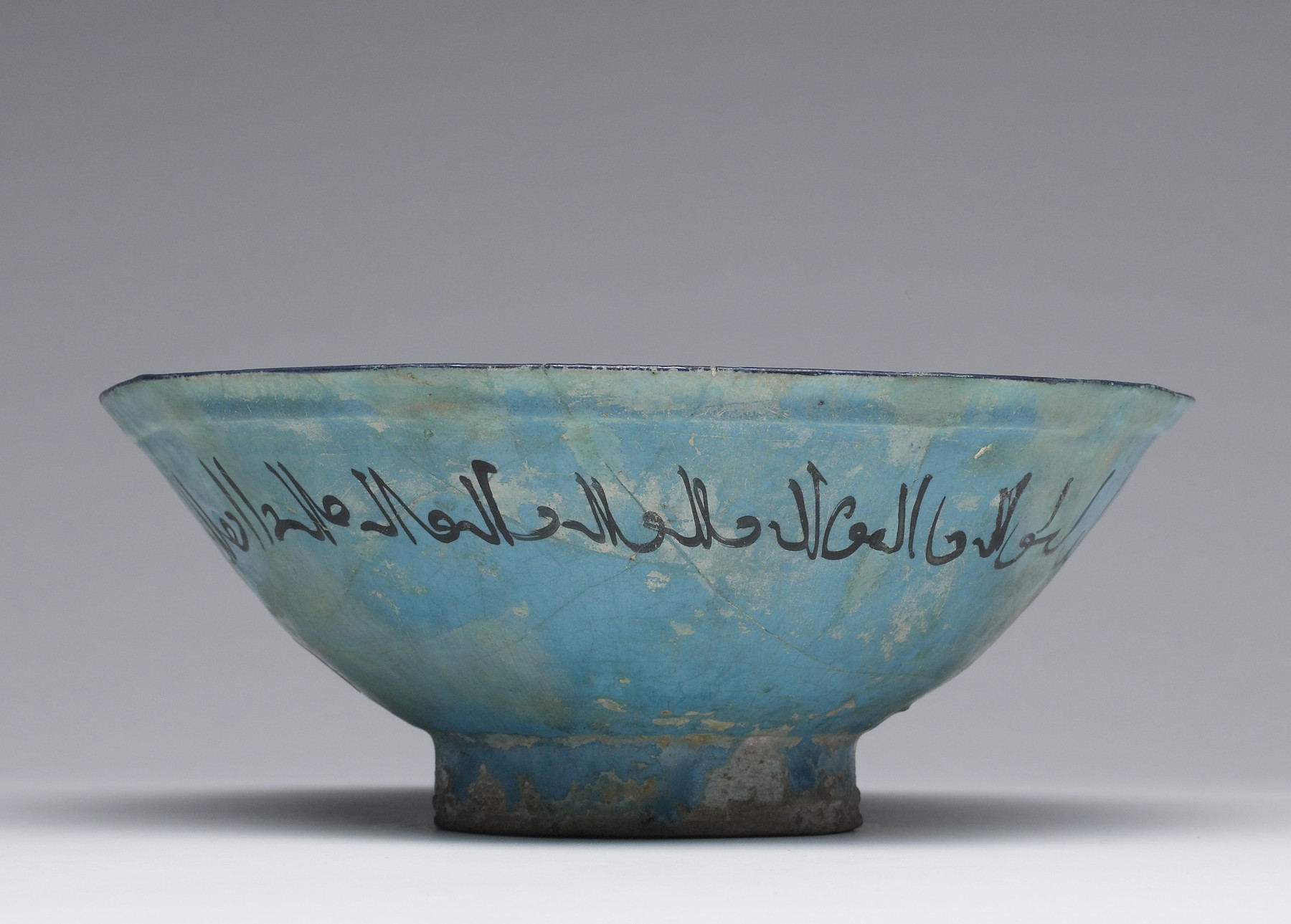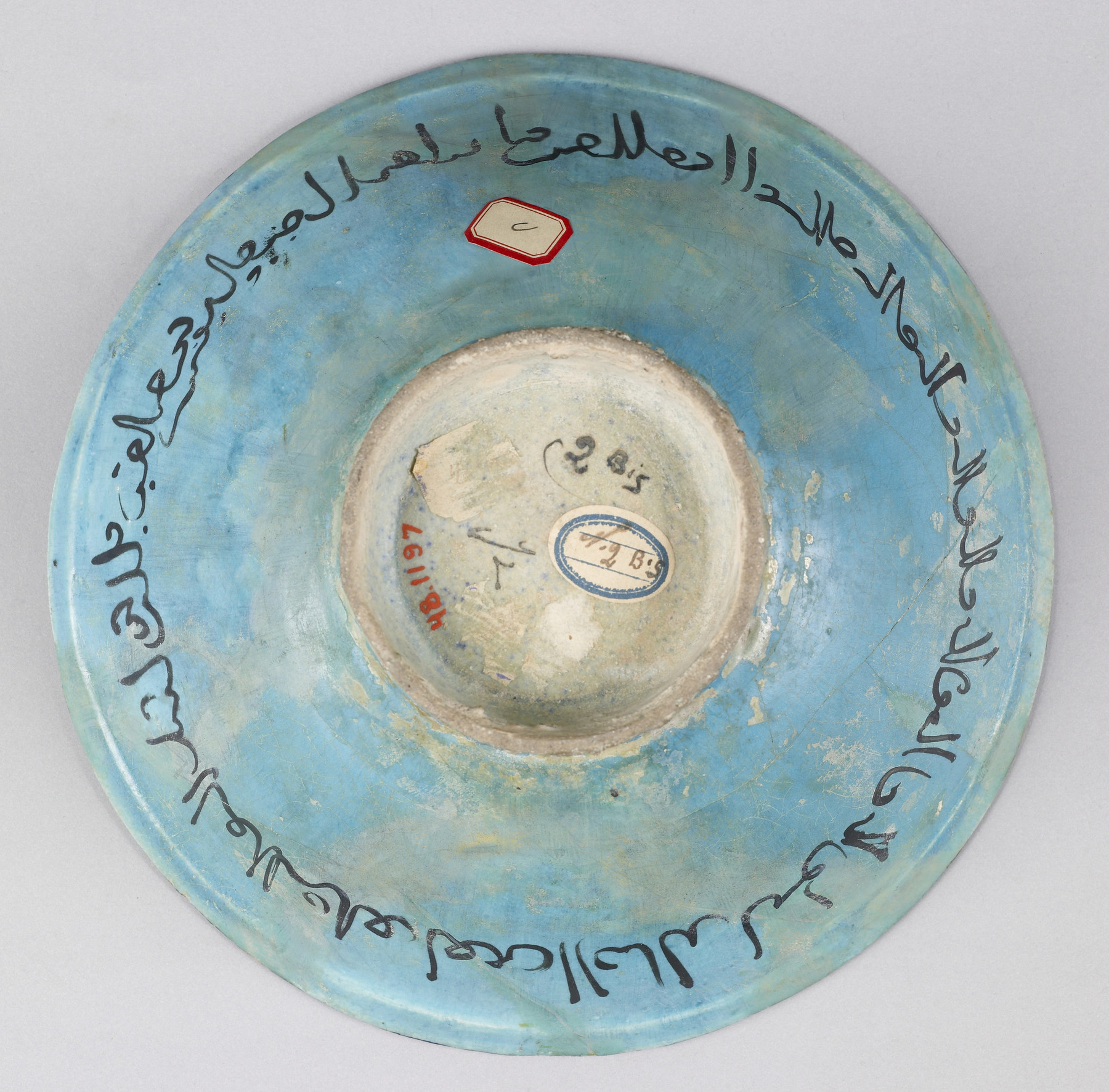Two horsemen under a central tree
Mina’i is a modern collectors’ term for ceramics made in Iran during the late 12th to early 13th centuries. The term mina’i, translates as “enamelled” in Persian, designating the colored glass pigments used to paint detailed figural decoration on vessels or tiles, which were then fixed on the ceramic base by multiple firings. The use of a wide range of colors, including turquoise, red, green, purple, and black, also led these types of ceramics to be called by the Persian term “haft rang,” or “seven colors.”
Mina’i ware scenes often depict courtly pursuits, such as feasting, fighting, or poetry and music performances. These colorful compositions created complex narrative scenes which paralleled manuscript painting. Two horsemen face each other across the center of this footed bowl, charging towards the tree that rises to mark the central line of the bowl. Birds and abstract floral motifs surround the two central figures and emphasize the hunting activity. A kufic pseudo-inscription encircles the rim on a deep blue band, and a naskhi inscription marks the exterior rim.
Provenance
Provenance (from the French provenir, 'to come from/forth') is the chronology of the ownership, custody, or location of a historical object. Learn more about provenance at the Walters.
Dikran Kelekian, New York and Paris, [date and mode of acquisition unknown]; Henry Walters, Baltimore, 1927, by purchase; Walters Art Museum, 1931, by bequest.
Geographies
Iran (Place of Origin)
Measurements
Overall: 3 1/8 x 7 11/16 in. (8 x 19.6 cm)
Credit Line
Acquired by Henry Walters, 1927
Location in Museum
Not on view
Accession Number
In libraries, galleries, museums, and archives, an accession number is a unique identifier assigned to each object in the collection.
In libraries, galleries, museums, and archives, an accession number is a unique identifier assigned to each object in the collection.
48.1197














